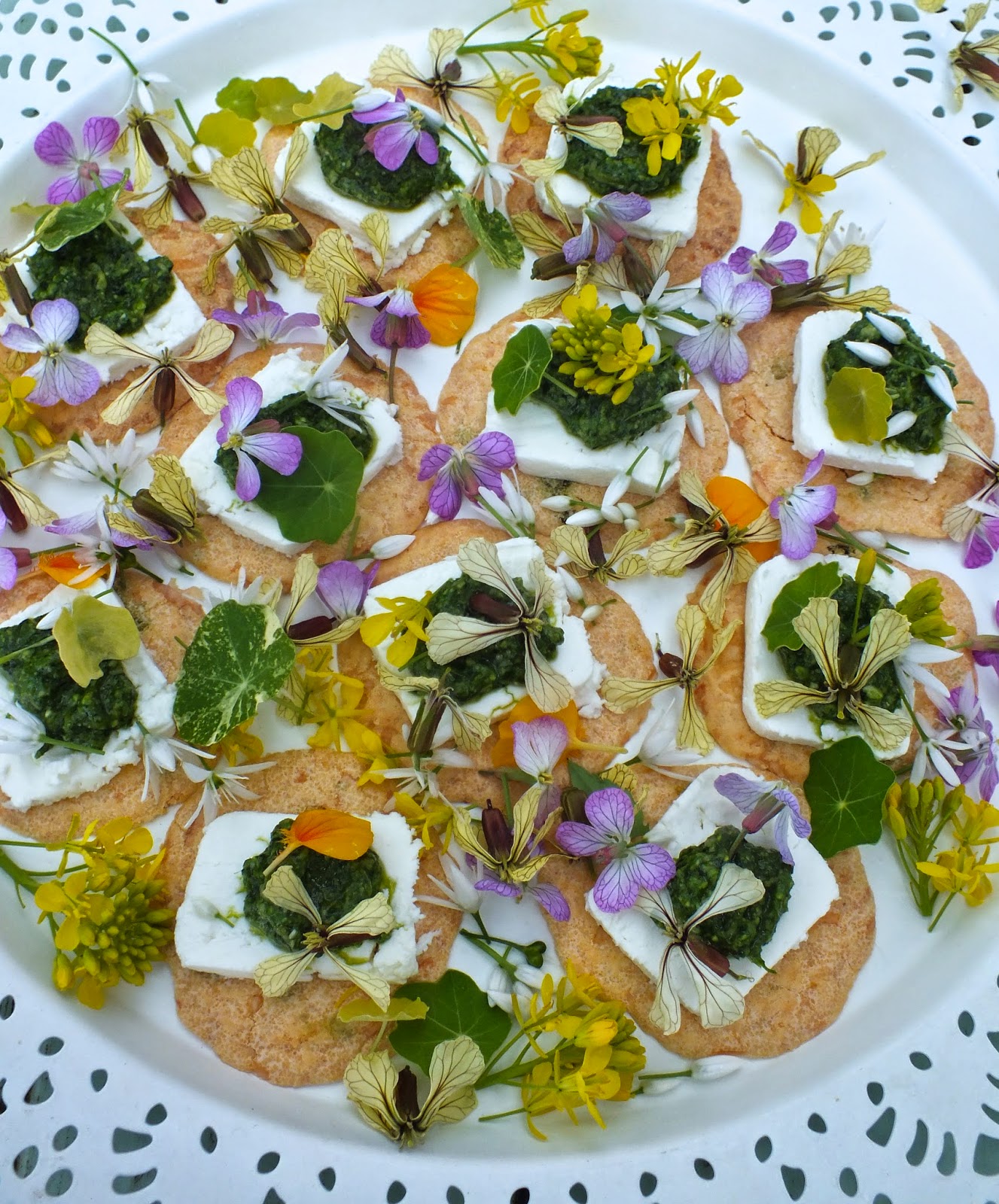Wild garlic and 'friends' pesto
 |
| Photo by Marcus Bawdon |
At Maddocks Farm Organics we make our own pesto in the summer due to the massive glut of various basils that we get. Basil can be a bit slow getting going so we always plant far more than we need but once it's up and running it is hard to keep up with and we always end up with far too much by the end of the season.
For me the main bonus of pesto is that it is extremely easy and quick to make and all the ingredients that you need are either in the garden or items that you'd have in the store cupboard or fridge. A necessity at the end of a long day's picking or planting. Also, it is extremely versatile. Apart from stirring through pasta, we bung it on flat breads and pizzas, slather new potatoes with it and dollop it on meat, fish or veggies. It also pretty good in a sandwich with a freshly picked tomato.
We've now extended our pesto making to other seasons and other ingredients and this time of year is perfect with wild garlic in abundance which forms a lovely base to be partnered with a whole host of spring time additions.
 |
| Wild garlic in the rain at Maddocks Farm Organics |
This weekend I was fortunate enough to be invited by
Darts Farm to do a demo at
Exeter Food Festival with the lovely Matt Mason from
The Jack in the Green pub in Rockbeare. I'm very lucky to have been working with Matt and his lovely team for a couple of years now and they are a joy to supply because they all are passionate about good local seasonal ingredients and unfailingly good humoured. Part of our demo comprised Matt cooking a 'big boy' steak accompanied by wild garlic, nasturtium and basil pesto and served with a selection of our spicy salad leaves and edible flowers. I'm sure it was delicious but I will never know as the audience descended like a swarm of hungry locusts leaving just the bone rattling around an empty plate. So when I got home I announced to Long Suffering Stu that we were having steak and pesto for supper.
Given the glut of ingredients outside and being too knackered to head to a supermarket I decided that basil 'was for girls' and made my pesto out of 1/3rd wild garlic (leaves, flowers, stems the lot); 1/3 nasturtium leaves and 1/3 giant red mustard - again leaves, shoots and flowers. Don't be afraid of adding quite spicy leaves. Our giant red mustard at this time of year brings tears to the eyes and an acute burning sensation to the nostrils but when added to the pesto it settles to a gentle warmth.
 |
| Wild garlic, giant red mustard, nasturtium leaves and edible flowers all heading for the pesto. |
Ingredients
100 grams of pine nuts (or walnuts or almonds or almost any nut that takes your fancy)
100 grams of good quality parmesan cheese (the best quality you can afford and in a block not the ready grated stuff)
200+ mls of really good quality olive oil
a couple of really large handfuls of your selected leaves (wild garlic, nasturtiums, mustards, spinach, herbs, rocket - you name it!)
If you are not adding wild garlic then add a couple of cloves of garlic.
Sea salt and pepper to season.
Roughly chop the greens by hand until they are quite fine. Grate the parmesan and add with all the remaining ingredients.
 |
| Hand grated parmesan has a much better flavour that the pre grated that you can buy in supermarkets. |
Blitz all the ingredients either in the food processor or with a hand blender until you have a smooth green paste.
This should produce a relatively firm pesto to which you can 'feed' additional olive oil depending upon the recipe that you have in mind. For example for spreading on bread or smearing under the skin of chicken this dryer version is better. For tossing through new potatoes or on pasta then a couple of additional glugs of olive oil will be necessary.
 |
| Wild garlic pesto with new baby new potatoes. |
 |
| Goats cheese canapés with wild garlic, mustard and nasturtium pesto. |






























